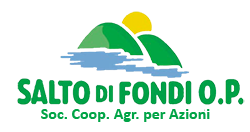This really isn’t an issue with the formulation – rather how a nice turn of phrase can lead to laziness on the part of practitioners and trainers. Bruce W. Tuckman’s model offers us a way of thinking about the groups we encounter and participate within in. It offers, in Donald Schön’s terms a metaphor or image that we can play with to make sense of the phenomenon before us.
Dissent is expected and allowed as long as it is channelled through means acceptable to the team. Tuckman’s doctoral student, Mary Ann Jensen, added this phase to acknowledge the process of closing out a project. While guiding a team through its development stages isn’t an easy task, by adapting one’s leadership style it is possible to expedite the process. Furthermore, you will be able to get more out of your team while keeping morale and effectiveness up. Finally, you will develop a team adaptable enough to weather any uncertainties the future brings with the flexibility and internal drive that allows the group to thrive.
Stage 3: Norming
While a team is in the Storming process, a leader should make sure that there is a clear understanding of purpose amongst group members. Additionally, she should assure that all the proper skillsets are represented to reach the team’s goal. Likewise, she should make sure team members feel there is a space for them to air out their feelings and concerns.

Many long-standing teams go through these cycles many times as they react to changing circumstances. For example, a change in leadership may cause the team to revert tostormingas the new people challenge the existing norms and dynamics of the team. “Resolved disagreements and personality clashes result in greater intimacy, and a spirit of co-operation emerges.”This happens when the team is aware of competition and they share a common goal. In this stage, all team members take the responsibility and have the ambition to work for the success of the team’s goals. The danger here is that members may be so focused on preventing conflict that they are reluctant to share controversial ideas. When the clouds part, the group moves from the storming stage to the norming stage of group development.
What are the five stages?
Tolerance of each team member and their differences should be emphasized; without tolerance and patience the team will fail. This phase can become destructive to the team and will lower motivation if allowed to get out of control. Some teams will never develop past this stage; however, disagreements within the team can make members stronger, more versatile, what are the four stages of team development and able to work more effectively as a team. Supervisors of the team during this phase may be more accessible, but tend to remain directive in their guidance of decision-making and professional behaviour. The team members will therefore resolve their differences and members will be able to participate with one another more comfortably.
Parents of disabled children join hands to learn better ways of coping with the problems and challenges related with the children. The members become a part of the meeting with a baggage of expectations.They think that this is the end of their tough times and they will overcome with their problems. They are also eager to meet and interact with others who are also having same problems. They do not know what type of persons are the worker and other members. On receiving applications, worker should examine and inspect them on different basis such as eligibility criteria, demographic attributes, experience, skills etc.
What your team needs to move on to the next stage
Clockwise automates the process of Color Coding by allowing you to assign different colors to types of tasks, eliminating the need to manually change colors every time you schedule a new task. During the Norming stage of team development, team members begin to resolve the discrepancy they felt between their individual expectations and the reality of the team’s experience. If the team is successful in setting more flexible and inclusive norms and expectations, members should experience an increased sense of comfort in expressing their “real” ideas and feelings.

While there may be some ‘universals of development’ when we come to examine, in this case, the individual group things are rarely that straightforward. Furthermore, our own experiences of groups are likely to show significant deviations from the path laid out by stage theories. ‘Stages’ may be missed out, other ways of naming a phase or experiences may be more appropriate. Bruce W. Tuckman produced one of the most quoted models of group development in the 1960s. At this stage, the coach or team leader may not be as involved in decision making and problem solving, since the team members are working better together and can take on more responsibility in these areas.
Team Building
The team spends the majority of their time performing because it is believed to be the most productive and results in goal achievement in an ideal situation. Supervisors https://www.globalcloudteam.com/ of the team during this phase are almost always participating. Even the most high-performing teams will revert to earlier stages in certain circumstances.
As these relationships and challenges form, the team must not become distracted from its purpose and ultimate goal. The team members have gotten to know each other, trust each other, and rely on each other. Performance can be measured by the morale of the team and the actual on field performance of the team. That is, are they achieving their performance statistics or quite simply, are they winning and feel great about being part of a team. Performing at a high level as a team is not a rite of passage, and it very rarely just happens, even when you start with a group of quality athletes. Every team, sporting or otherwise, starts as a group of diverse individuals and follows predictable patterns, or stages of development, on their way to becoming a cohesive team.
Stage 5: Adjourning
The termination of the group is a regressive movement from giving up control to giving up inclusion in the group. In this stage typically team members are ready to leave causing significant change to the team structure, membership, or purpose and the team during the last week of class. While the group continues to perform productively they also need time to manage their feelings of termination and transition. This stage begins to occur as the process of organizing tasks and processes surface interpersonal conflicts.
- Yet, this is not a natural process; rather, it grows as the team collaborates.
- While there are various differences concerning the number of stages and their names – many have adopted a version of Tuckman’s model – forming, storming, norming and performing.
- This stage doesn’t focus so much on proper processes, or even having clearly defined roles.
- One of the more common initial reactions from teachers to this suggestion is a brief look of panic and an almost imperceptible flinch.
They will have differing opinions on what should be done and how it should be done, often resulting in conflict within the team. In this article we’ll give you a brief overview of each stage, what it looks like, and what its purpose is. Importantly, we’ll also discuss what a coach can do to help guide their team through each stage and onto the next. Some teams do come to an end, when their work is completed or when the organization’s needs change.
Norming Stage:
By guiding your team through the stages of group development, you also reduce bottlenecks and other hold-ups that might be caused by poor group dynamics. The Forming, Storming, Norming, Performing model is crucial for understanding the evolution of a team and improving overall performance. As the team begins to work, train, play, and compete together they move into the ‘storming’ stage. This stage is unavoidable and every team, especially a new team who has never worked together before, will go through this phase of development.
